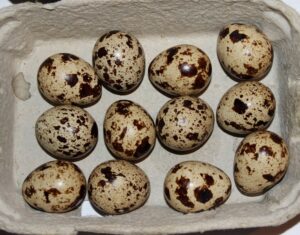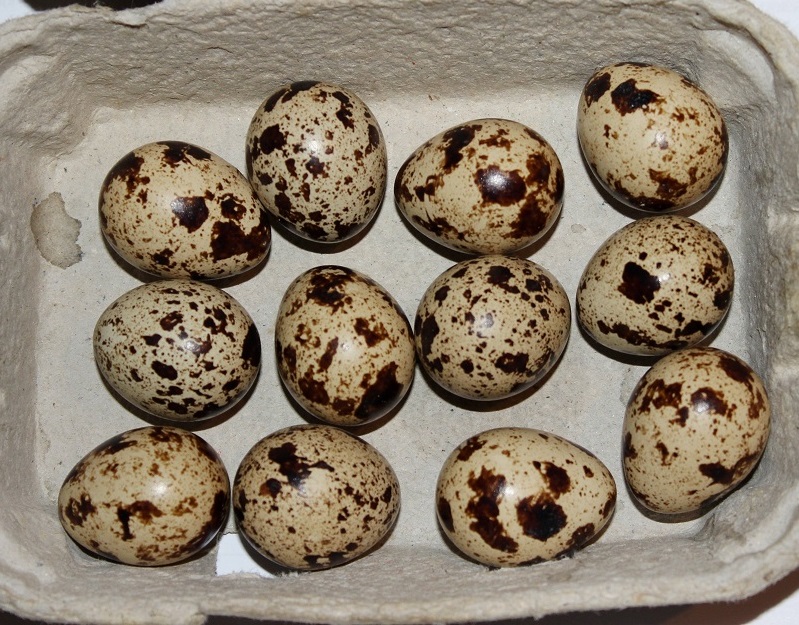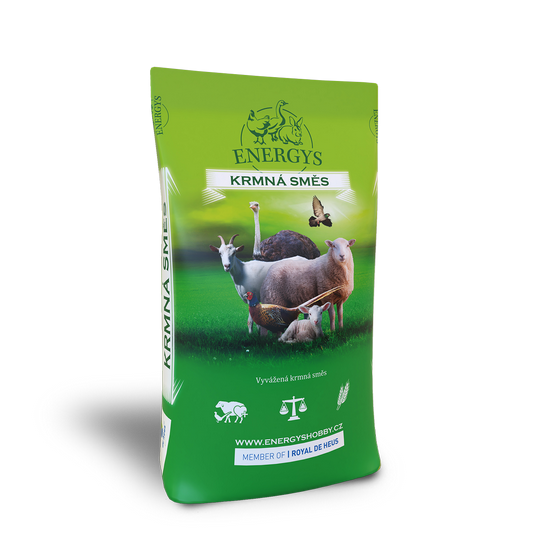Raising of quail
For non-traditional poultry species, there are very few manuals that address their rearing and fattening. We have therefore prepared basic information on quail rearing.
Carrier and broiler line of quails
You can read in the literature that japanese quails were domesticated in japan as early as the 14th century. However, the first quail farms were not established until six centuries later (especially in the 1950s), not only in the country of origin but also in america. Because the end product of the emerging commercial farms was both eggs and meat, the breeders‘ efforts resulted in two lines – a layer and a broiler line.
The laying type quails weigh between 100 and 140 g (the cockerels are smaller) and lay up to 300 eggs weighing between 10 and 12 g. Broiler line quails weigh up to twice as much (240 g) and lay only 200 eggs, which are up to four grams heavier. Both lines reach sexual maturity at six weeks.
 Quail can also be kept in the city
Quail can also be kept in the city
Not only the earliness of japanese quail, but also their growth and reproduction ability, low feed consumption and low demand in terms of housing size is the reason why people in cities are also breeding them. With adequate nutrition (a special feed mixture with a higher protein content), temperature (optimum 18 °c) and light, eggs can be produced comfortably in domestic conditions, which, although about four times smaller than those of hens, have a high nutritional value.
Quail eggs
Quail’s eggs contain vitamins (a, d, e, b1, b2, b12), trace elements (magnesium, phosphorus, copper, calcium, iron), high-value proteins, essential amino acids, phosphatides (lecithin), carbohydrates and other specific biologically active substances that have a beneficial effect in the treatment of cardiovascular diseases, eczema, diabetes, asthma, digestive tract disorders and significantly strengthen the body’s immunity. They are an excellent dietary supplement for athletes, as well as children, the elderly and pregnant women. In the home kitchen they are especially popular for the preparation of cold bowls.

Související články
12. ledna 2022
Pro netradiční druhy drůbeže existuje jen velmi málo návodů, které by se věnovaly jejich odchovu a výkrmu. Připravili jsme proto základní informace o chovu křepelek.
19. září 2018
Za poslední desetiletí se stala křepelka japonská drůbeží s nejvyšším nárůstem jejich počtu v drobných chovech. Mezi důvody rozšíření můžeme řadit rostoucí oblibu křepelčích vajíček produkovaných v omezených prostorových podmínkách, její rychlý vývoj do nástupu snášky a určitá skromnost ve výživě.
Související produkty

KŘEPELKA GOLD
Drcená směs pro křepelky podporující vysokou snášku. Krmte od 7. týdne věku. Pro odchov a výkrm doporučujeme náš výrobek Křepelku Mini. Neobsahuje kokcidiostatikum.

KŘEPELKA MINI
Jemně drcená kompletní krmná směs pro odchov a výkrm křepelek do 6. týdne věku. Svým složením napomáhá rychlému růstu a správnému rozvoji organismu. Neobsahuje kokcidiostatikum. Pro podporu snášky doporučujeme náš výrobek Křepelku Gold.

